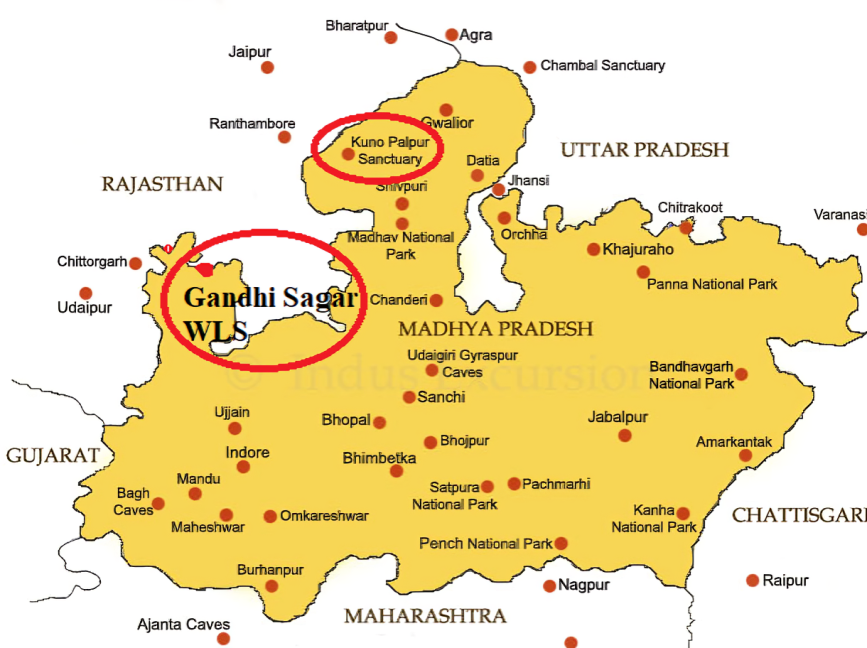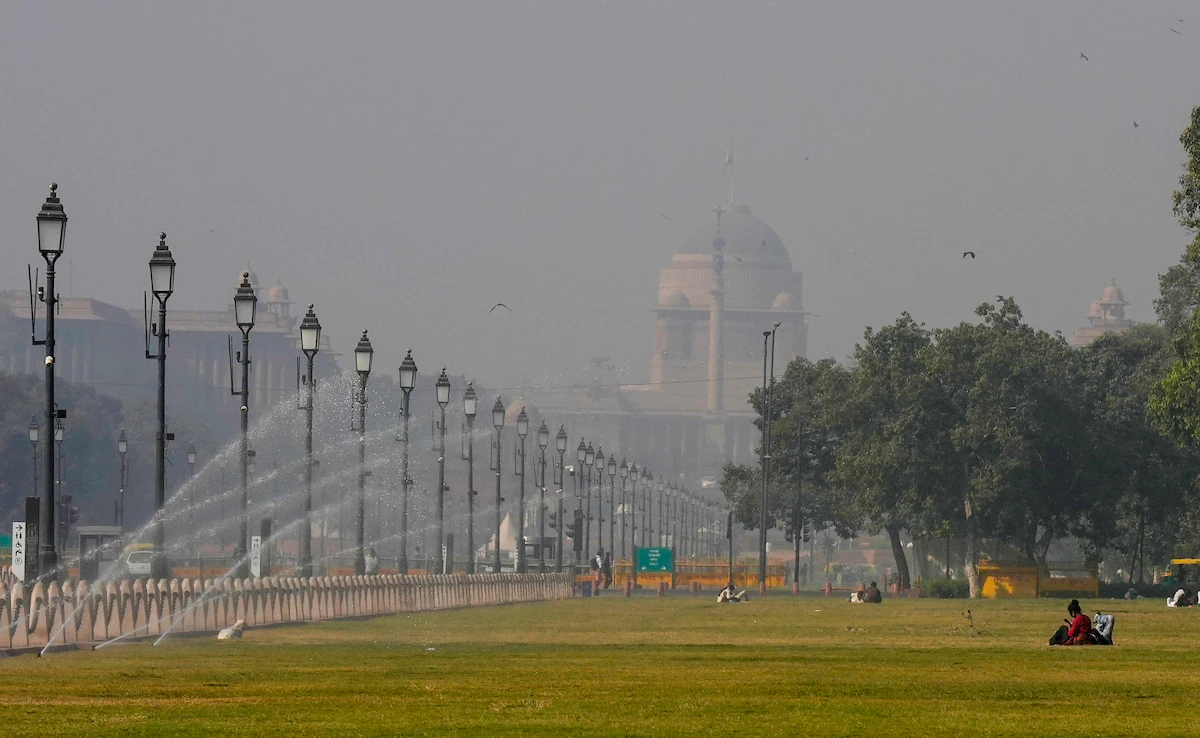- Courses
- GS Full Course 1 Year
- GS Full Course 2 Year
- GS Full Course 3 Year
- GS Full Course Till Selection
- Answer Alpha: Mains 2025 Mentorship
- MEP (Mains Enrichment Programme) Data, Facts
- Essay Target – 150+ Marks
- Online Program
- GS Recorded Course
- Polity
- Geography
- Economy
- Ancient, Medieval and Art & Culture AMAC
- Modern India, Post Independence & World History
- Environment
- Governance
- Science & Technology
- International Relations and Internal Security
- Disaster Management
- Ethics
- Current Affairs
- Indian Society and Social Issue
- NCERT- Science and Technology
- NCERT - Geography
- NCERT - Ancient History
- NCERT- World History
- CSAT
- 5 LAYERED ARJUNA Mentorship
- Public Administration Optional
- ABOUT US
- OUR TOPPERS
- TEST SERIES
- FREE STUDY MATERIAL
- VIDEOS
- CONTACT US
Gandhi Sagar Wildlife Sanctuary: India's Second Home for Cheetahs
Gandhi Sagar Wildlife Sanctuary: India's Second Home for Cheetahs
22-07-2024
- The Gandhi Sagar Wildlife Sanctuary in Madhya Pradesh is set to become the second home for cheetahs in India, after the Kuno National Park.
Gandhi Sagar Wildlife Sanctuary:
- The sanctuary spans 368.62 sq km, in the districts of Mandsaur (187.12 sq km) and Neemuch (181.5 sq km), right on the border with Rajasthan.
- It sits atop a flat rocky plateau, with the Chambal river cutting the sanctuary into two almost equal halves.
- The Gandhi Sagar dam, constructed on the river in 1960, lies within the area of the sanctuary, and so do parts of its reservoir, 726 sq km large and the third largest in the country.

Ideal Habitat for Cheetahs:
- The rocky terrain and exposed sheetrock create a shallow topsoil, resulting in a savanna ecosystem with open grasslands and dry deciduous trees and shrubs.
- Riverine valleys within the sanctuary are evergreen.
- Madhya Pradesh's wildlife officials state that Gandhi Sagar offers a "perfect" cheetah habitat.
Preparation for Cheetah Introduction:
- An area of 64 sq km has been developed for the cheetahs at a cost of ₹17.72 crores.
- A soft release enclosure (boma) has been constructed to ensure a suitable and secure habitat for the cheetahs upon their arrival.
- A hospital catering to the needs of cheetahs is also being built.
- Wildlife officials are conducting a comprehensive status assessment of herbivores and predators in the sanctuary to understand the existing ecological dynamics.
Challenges to Making Gandhi Sagar a Viable Cheetah Habitat:
- The primary challenge is augmenting the prey base, increasing the number of animals that cheetahs can hunt.
- Male cheetah siblings form coalitions of three to five members, while females live more solitary lives unless with their litter.
- A cheetah coalition is expected to make a kill every 3-4 days, requiring about 350 ungulates for a single coalition family.
- Insufficient prey base remains an issue, as seen in Kuno.
- Other challenges include competition with leopards and other predators, poaching, and human habitation and highways near the protected area.
Future Development of Gandhi Sagar:
- The first phase of augmentation will target the section west of the Chambal River to enable cheetah reintroduction as soon as a sufficient prey base is available.
- Developments within Gandhi Sagar will initially focus on the "Neemuch side of Chambal".
- The eastern side (Mandsaur side) has more human activity and houses the Gandhi Sagar township.
- The Chambal River acts as a barrier to casual wildlife movement between the two halves of the sanctuary.
Project Cheetah:
- Project Cheetah aims to restore the population of cheetahs in India, declared extinct in 1952.
- The project involves translocating cheetahs from South Africa and Namibia to Kuno National Park in Madhya Pradesh.
-
Phase-1 of Project Cheetah:
- Started in 2022, with the goal of reintroducing cheetahs to India.
- Implemented by the National Tiger Conservation Authority (NTCA) in collaboration with the Madhya Pradesh Forest Department and the Wildlife Institute of India (WII).
-
Phase-2 of Project Cheetah:
- Considering sourcing cheetahs from Kenya due to similar habitats.
- Cheetahs will be translocated to Kuno National Park and Gandhi Sagar Wildlife Sanctuary.
3. Importance of Project Cheetah:
- Aims to restore the cheetah population in India, essential for maintaining ecological balance.
- Highlights the importance of conservation efforts and protecting endangered species.
4. Challenges faced by Project Cheetah:
- Availability of suitable habitat for cheetahs.
- Risk of poaching and human-wildlife conflict.
- Challenges in terms of funding and resources.
Some Facts about Cheetahs:
-
Breeding and Maturity: Cheetahs breed year-round, with a peak during the rainy season. Females mature at 20-24 months, males at 24-30 months.
-
Gestation and Litters: Gestation lasts about 90-95 days, with litters of 3-5 cubs.
-
Vocalizations: Unlike other big cats, cheetahs do not roar. They communicate with high-pitched chirps or barks.
-
Territorial Behavior: Generally solitary, cheetahs use scratch marks, scent marking, and vocalizations like the "stutter bark" to establish territory.
-
Speed and Hunting: The fastest land animals, cheetahs can reach speeds up to 120 km/h in short bursts and accelerate from 0 to 100 km/h in just 3 seconds. Their hunting success rate is about 40-50%.
-
Protection Status of Cheetah:
- IUCN Red List: Vulnerable
- Wild Life (Protection) Act, 1972: Schedule 2
- CITES: Appendix I
Must Check: Best IAS Coaching In Delhi
UPSC Prelims Result 2024 Out: Expected Cut Off & Other Details, UPSC Prelims 2024 Answer with Explanation, Daily Prelims Quiz, Daily Current Affairs, MONTHLY CURRENT AFFAIRS TOTAL (CAT) MAGAZINE, Best IAS Coaching Institute in Karol Bagh, Best IAS Coaching Institute in Delhi, Daily Mains Question Answer Practice, ENSURE IAS UPSC Toppers, UPSC Toppers Marksheet, Previous Year Interview Questions, UPSC Syllabus



